| If you are having troubles viewing this e-mailer, kindly "click here" for the online version. |
 |
 |
|
| Future Growth Prospects of Metro Rail in India
|
|
|
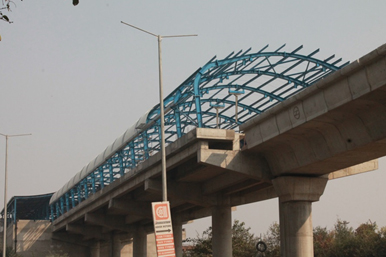 India’s first metro started operating in Kolkata in 1984, in the 33 years since; nine other metro rails have been constructed. In all, more than 350 km network has been completed, and over 500 km is being added to the network across different cities. So, in a few years, India will have a metro network of over 850 km. India’s first metro started operating in Kolkata in 1984, in the 33 years since; nine other metro rails have been constructed. In all, more than 350 km network has been completed, and over 500 km is being added to the network across different cities. So, in a few years, India will have a metro network of over 850 km.
The metro rail network in the country is growing with the Metro Rail system emerging as one of the most convenient solutions for urban transportation. Even as eight metro rail networks are operational in the country, over two dozen more projects are already under discussion. The cities that have lined up their plans include Pune, Nagpur, Ahmedabad, Vijayawada, Kozhikode, Indore, Bhopal, Patna, Guwahati, Kanpur and Varanasi.
In the last three years, from 2014-2017, the urban development ministry sanctioned around Rs30,653.78 crore for various metro rail companies in the country. Similarly, in the current fiscal year, the ministry allocated around Rs17,960 crore for metro rail companies.
The Overall cost of expansion of Metro operations and under implementation approved metro projects is going to support the order books of construction contractors & allied industries. This is expected to boost the order book of construction companies and boost overall economic scenario
|
|
|
|
|
|
|
|
 |
|
| Interarch Industry Spokesperson - Mr. M.P. Naidu, L&T-Metro Rail (Hyderabad) Limited |
|
|
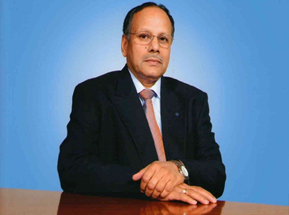 Mr. Naidu has over 42 years of professional experience in the design and execution of various medium, large and Mega projects in India and abroad. At present, Mr. Naidu is the Project Director of L&T Metro Rail (Hyderabad) Limited, the world’s largest PPP Project in the metro sector, being executed on Design, Built, Finance, Operate & Transfer (DBFOT) basis with an investment in excess of Rs.16,000 crs. Mr. Naidu has over 42 years of professional experience in the design and execution of various medium, large and Mega projects in India and abroad. At present, Mr. Naidu is the Project Director of L&T Metro Rail (Hyderabad) Limited, the world’s largest PPP Project in the metro sector, being executed on Design, Built, Finance, Operate & Transfer (DBFOT) basis with an investment in excess of Rs.16,000 crs.
Prior to this Mr. Naidu was the Project Director for Delhi International Airport, Terminal-3, a project worth of Rs.9,000 Crs. Mr. Naidu graduated from REC, Bhopal, in 1972 in Civil Engineering and did his Post Graduation M Tech (Hydraulics & Water Resources) from Regional Engineering College, Warangal, in 1974.
As per him the growth prospects of Metro are excellent in India as it acts as a catalyst for the city’s economic & functional development and business opportunities. Metro has proven to be the best mode for intra-city transportation as it is the fastest and greenest transit system with the flexibility of connecting to various nodes of the city.
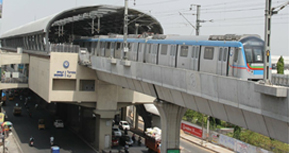 On adoption of latest metro infrastructure trends, he suggests Metro stations are to be seen as the hub of transit systems and not as a standalone system. Stations may be strategically positioned for connecting to various other transit systems like Bus stations, Railway Stations and suburban railway stations for seamless commute. Stations may be connected by a sky-walk to the retail, residential, institutional and commercial developments for better experience & comfort to commuters. All these concepts are being implemented in Hyderabad Metro along with 18.5 million Sq. Ft of Transit Oriented development. On adoption of latest metro infrastructure trends, he suggests Metro stations are to be seen as the hub of transit systems and not as a standalone system. Stations may be strategically positioned for connecting to various other transit systems like Bus stations, Railway Stations and suburban railway stations for seamless commute. Stations may be connected by a sky-walk to the retail, residential, institutional and commercial developments for better experience & comfort to commuters. All these concepts are being implemented in Hyderabad Metro along with 18.5 million Sq. Ft of Transit Oriented development.
As per Mr. Naidu, Design philosophy of Metro station should be sustainable and should give better comfort levels during & after construction. In Hyderabad Metro, Innovative design concepts like Spine and Wing concept, sleek station boxes for maximum natural ventilation & daylighting at street level, open station concept at concourse and platform level for 100% day-lit, solar panels on station roof are implemented. The roofs of the stations were selected with the high SRI value to reduce heat island effects. In addition, locally available materials, rainwater harvesting, eco-friendly chemicals, LED fixtures, native species plantation, materials with recycled content etc. are employed as a part of green initiatives while designing and constructing the metro structures.
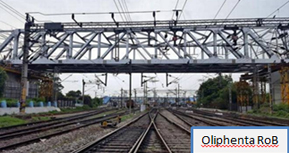 Clear span for any Metro project depends on various factors like location of the project, challenges with regards to traffic movement, road junctions, location of heritage & landmark structures and non-routable underground services. For Hyderabad Metro Viaduct, the most economical span is 31M. Clear span for any Metro project depends on various factors like location of the project, challenges with regards to traffic movement, road junctions, location of heritage & landmark structures and non-routable underground services. For Hyderabad Metro Viaduct, the most economical span is 31M.
As per Mr Naidu, type of structural frames or system to be employed depends on the complexity and site constraints of the project. In Hyderabad Metro, Piers for Stations & Viaduct are planned at middle of high traffic density roads. To minimize inconvenience to public, precast post-tensioned, pre-tensioned cast in-situ and steel structures are planned. Oliphenta Rail-over-Bridge has been installed under his guidance. It’s an engineering feat. Length of this steel bridge is 82 m and is to be aligned with a steep curve of 128m radius. The total weight of the girder is about 1100 MT. Girder is assembled on top of the trestles of height 20m. Hydraulic jacks of 100 MT capacity and Hillman rollers of 300MT and 500 MT capacities were used for launching the operation. This task was completed in 6 hrs. time given by Railway authorities.
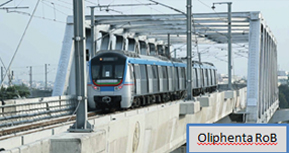 Focusing on the challenges faced during the Hyderabad Metro project, he suggests designs shall be innovative and shall take into consideration of public convenience, construction timings underground utilities etc. as these will have impact on project duration. Steel structure can become a suitable alternative in the near future with increasing space and time constraints for executing projects. Focusing on the challenges faced during the Hyderabad Metro project, he suggests designs shall be innovative and shall take into consideration of public convenience, construction timings underground utilities etc. as these will have impact on project duration. Steel structure can become a suitable alternative in the near future with increasing space and time constraints for executing projects.
Under Mr. Naidu’s guidance, Hyderabad Metro has obtained the prestigious IGBC Platinum rating for its technical innovations and adoption of green initiatives.
|
|
|
|
|
|
|
|
| |
| |
|
|
| |
|
|
|
| |
 |
|
| New Trends in Metro Rail System - Driverless Metro Trains |
|
|
The first line to be operated with automatic operations was in the U.K., which opened in 1967, however the driver was present in the cabin during transit. Now days many rails operate using an ATO system, with an objective of making the frequency of the service more efficient. Since then, ATO technology has been developed to enable Metro trains to operate even without a driver: either with an attendant roaming within the train, or with no staff on board.
Degrees of Automation
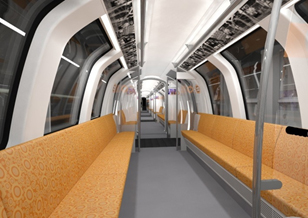 Grade-of-Automation 4 (GoA4) Grade-of-Automation 4 (GoA4)
In this system, Metro trains are capable of operating automatically at all times, including door closing, obstacle detection and emergency situations. On-board staff may be provided for other purposes, e.g. customer service, but are not required for safe operation
Grade-of-Automation 3 (GoA3)
In this system, trains run automatically from station to station but a staff member is always in the train, with responsibility for handling of emergency situations. In a GoA3 system, the train cannot operate safely without the staff member on board
Grade-of-Automation 2 (GoA2)
In this system, trains run automatically from station to station but a driver is in the cab, with responsibility for door closing, obstacle detection on the track in front of the train and handling of emergency situations.
|
|
| |
 |
|
|